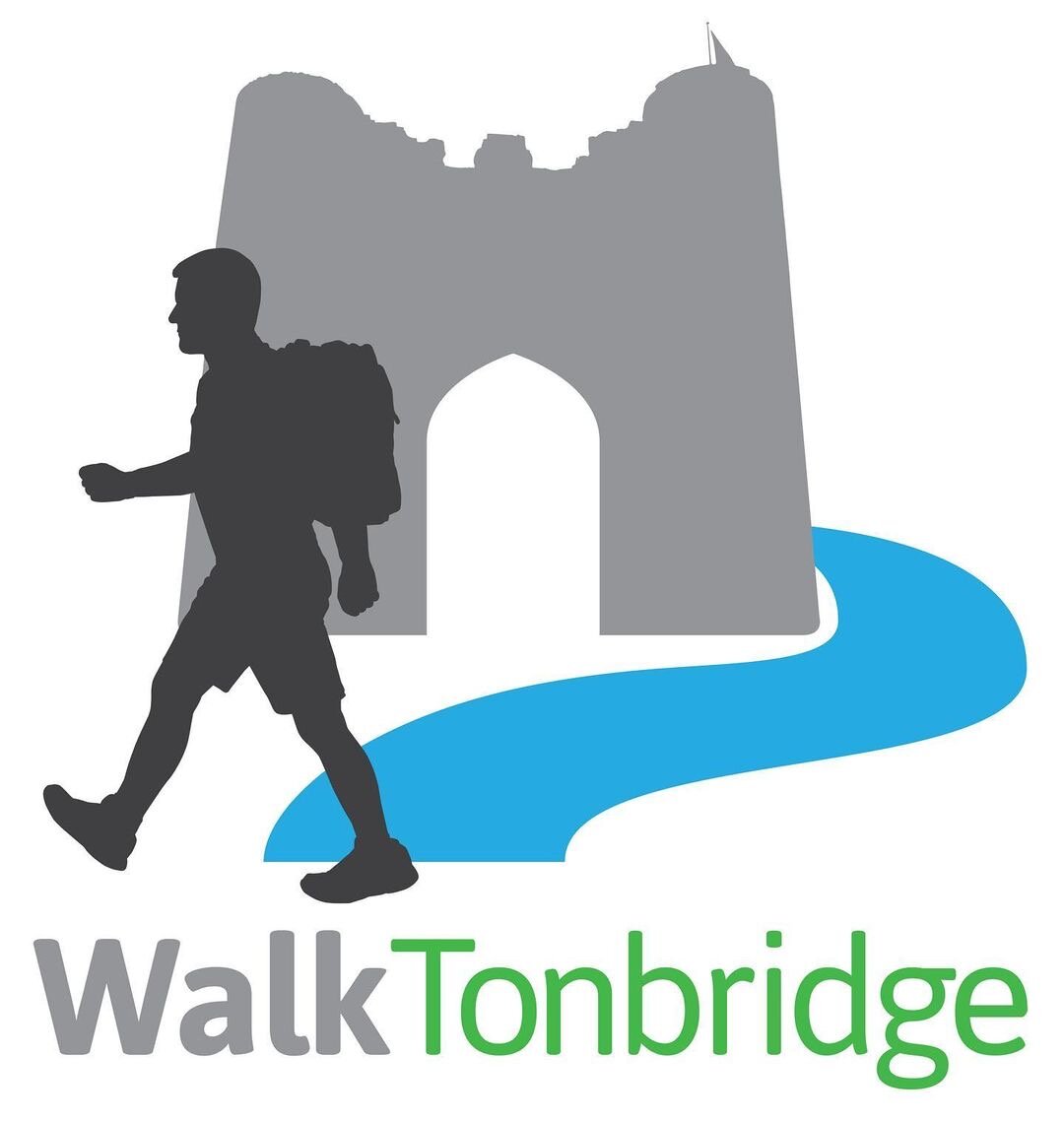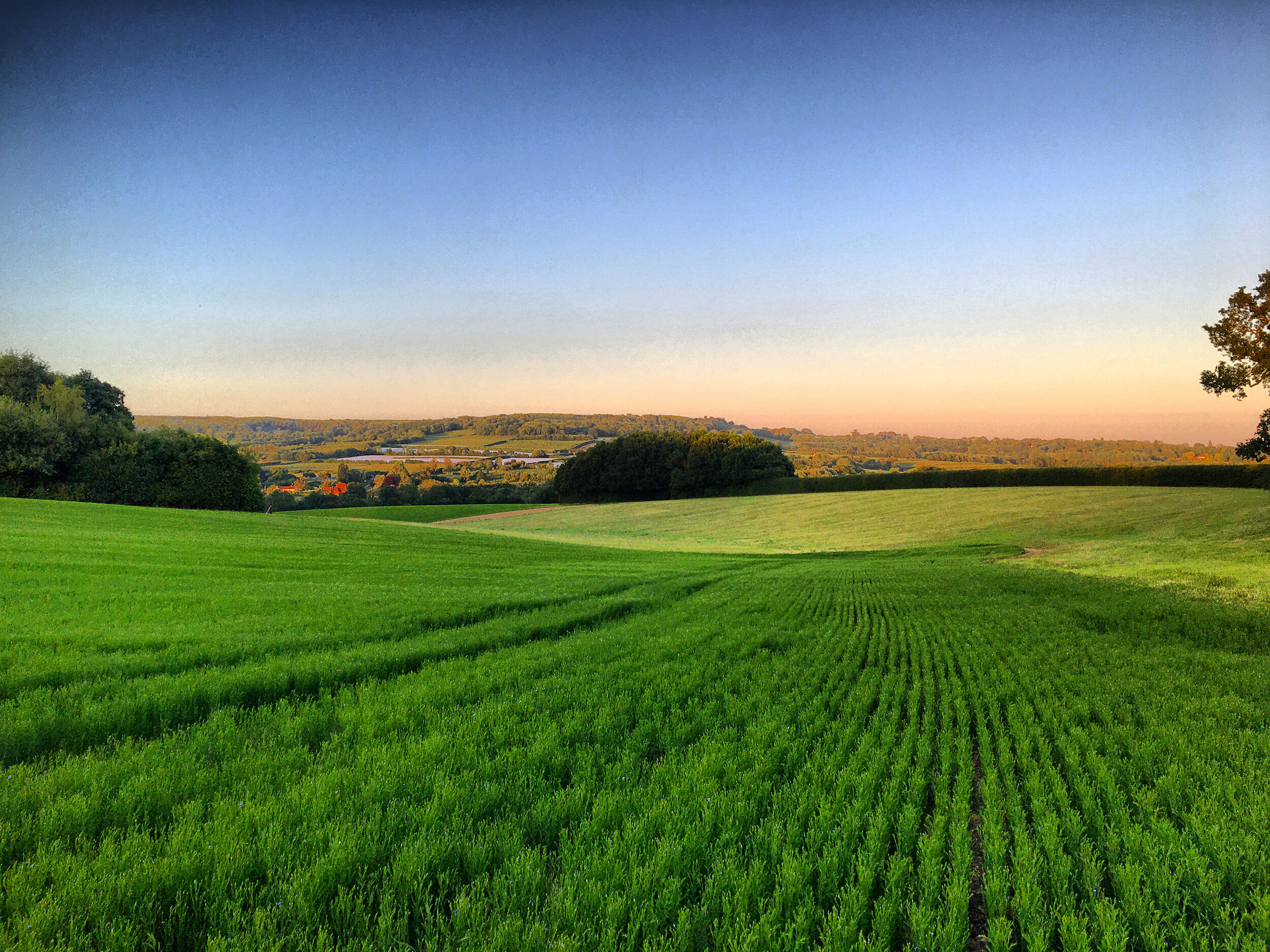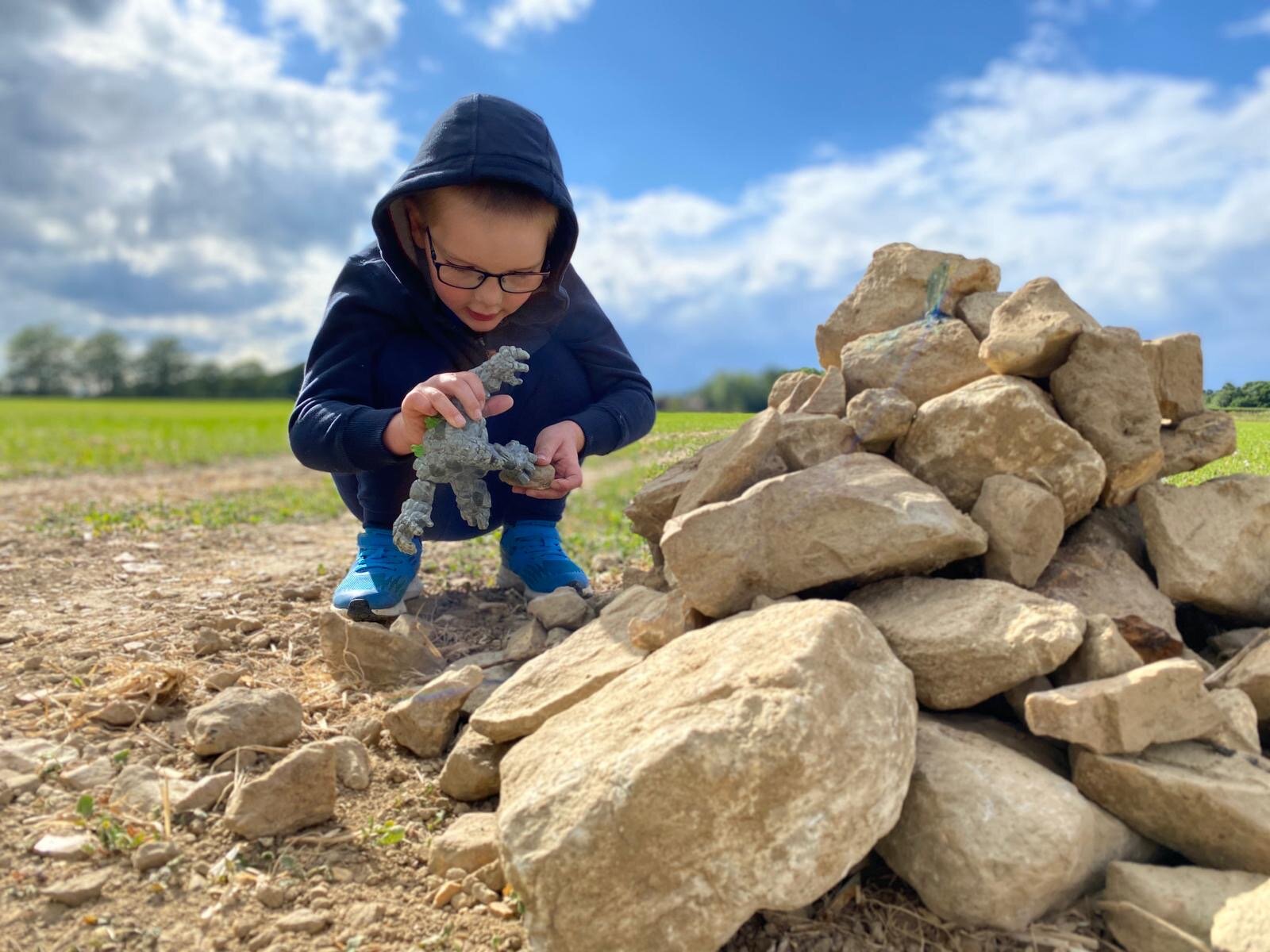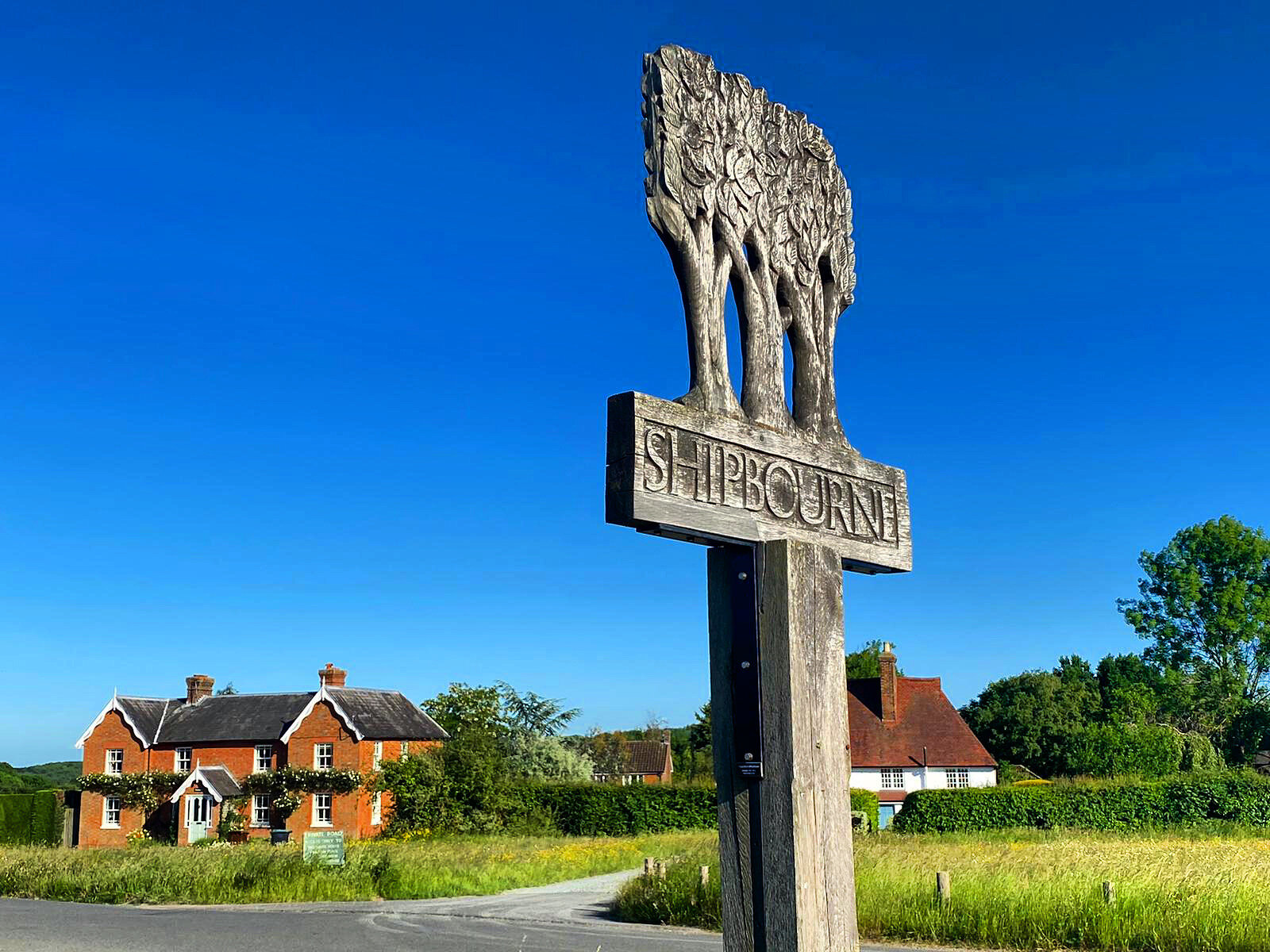Walk 11: The Steeple Chase
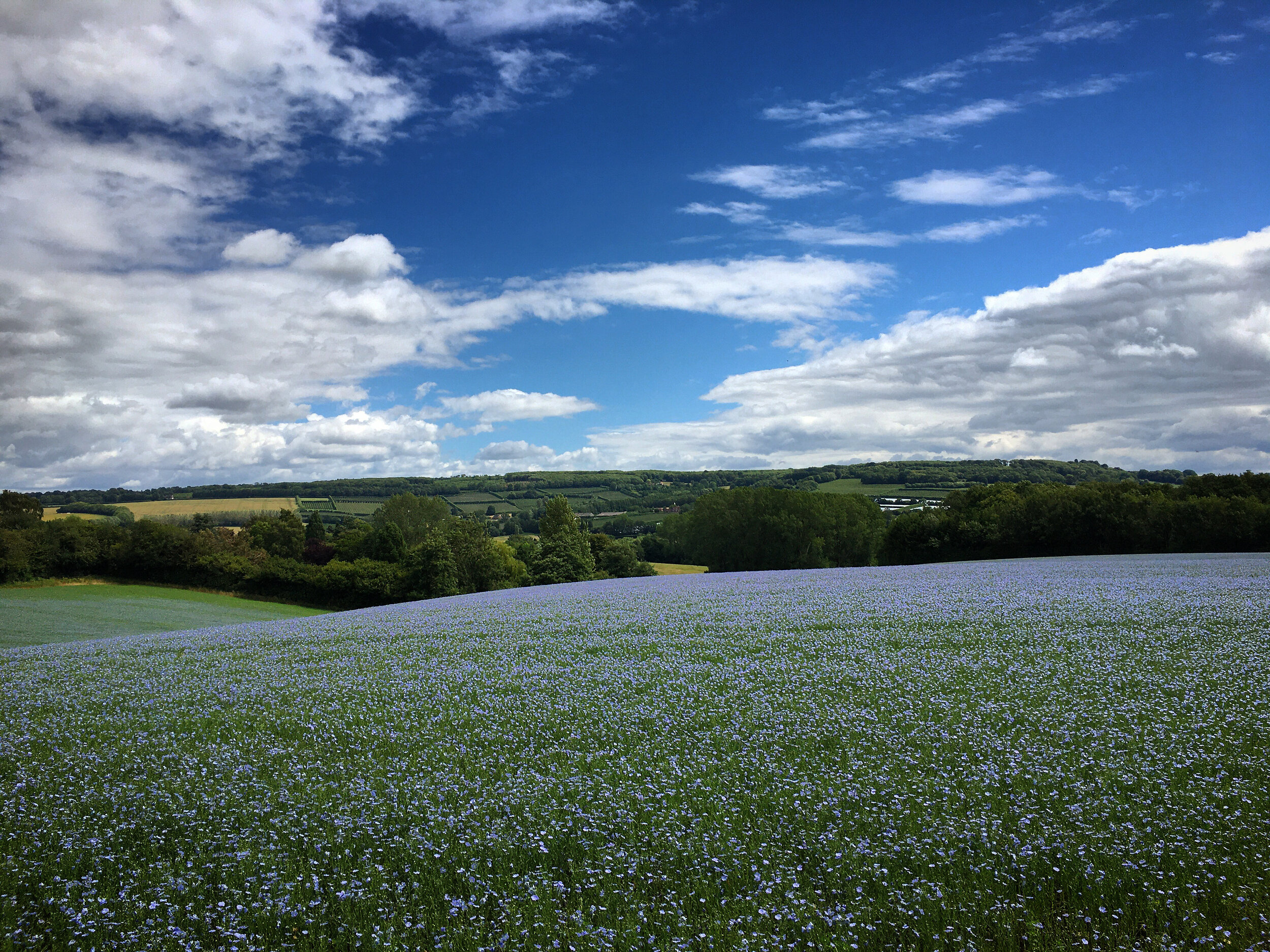
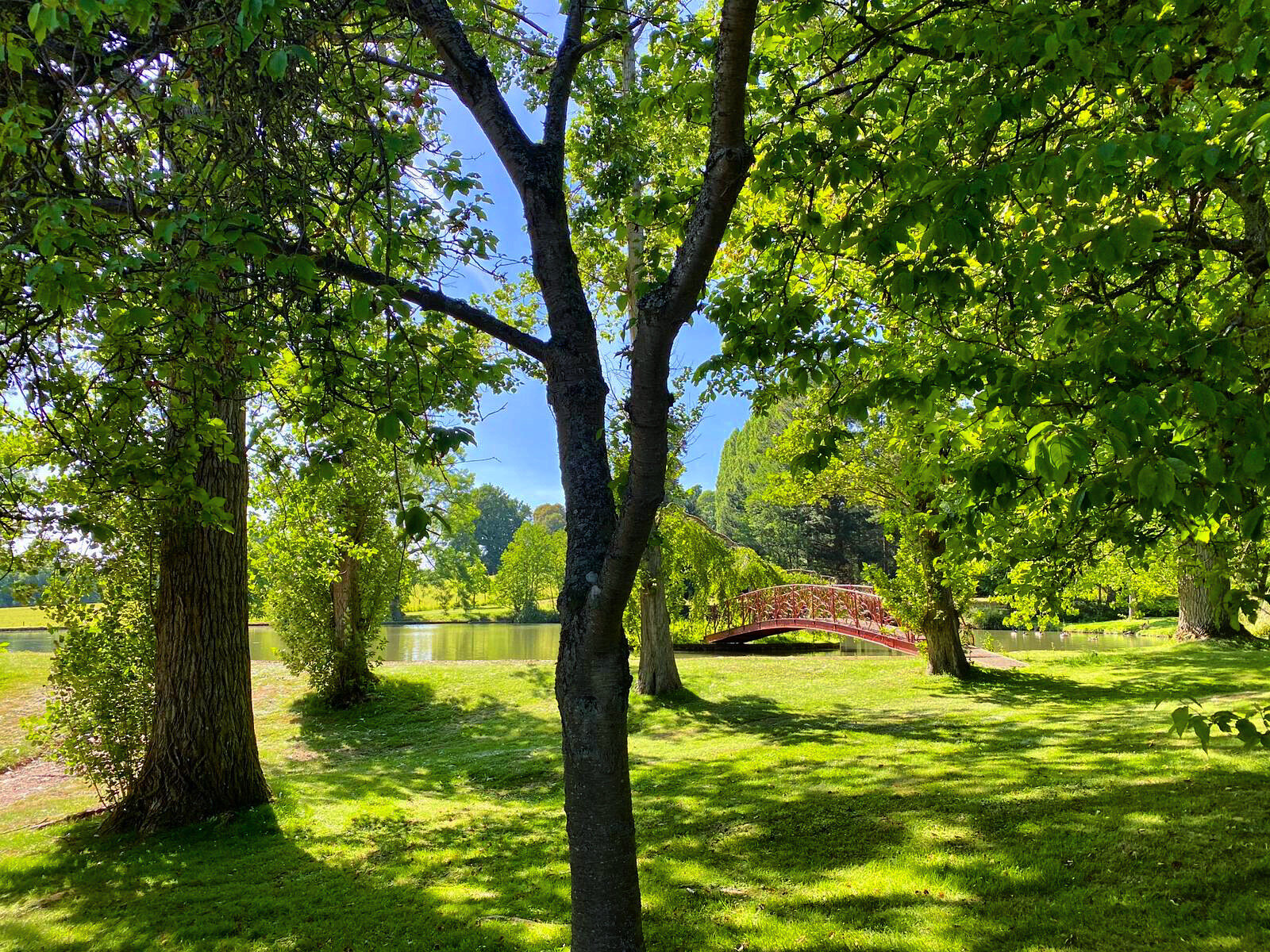
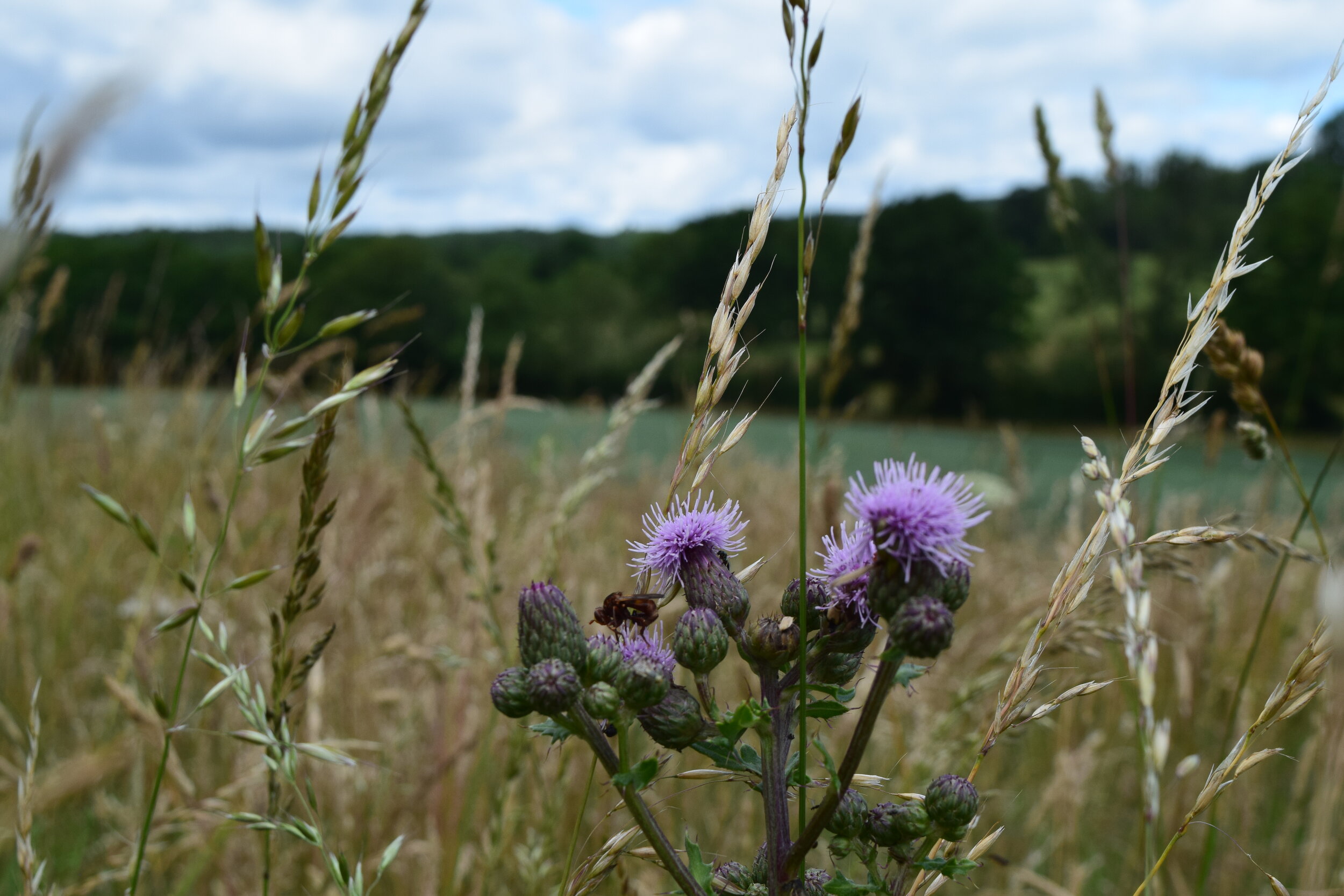
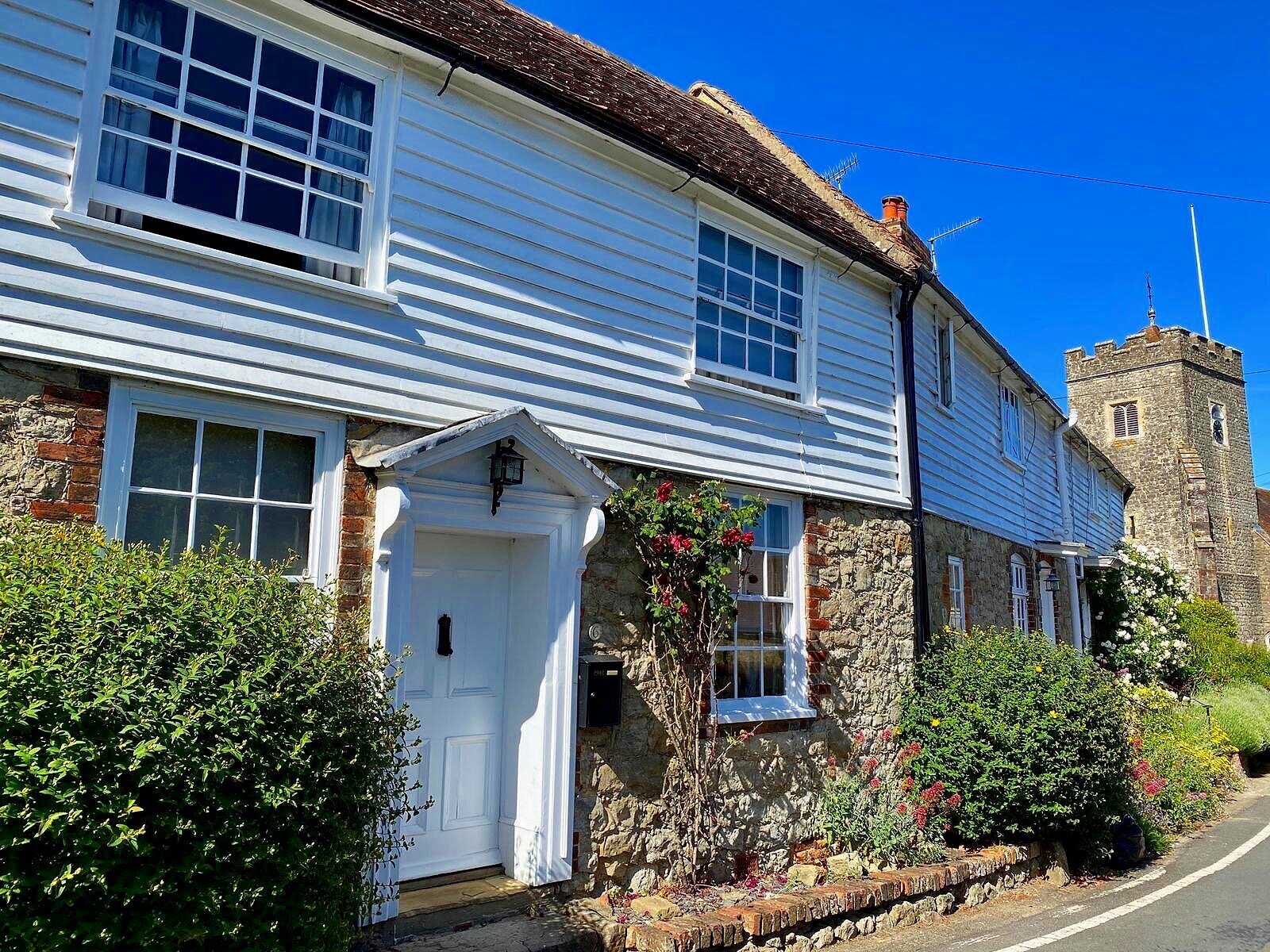
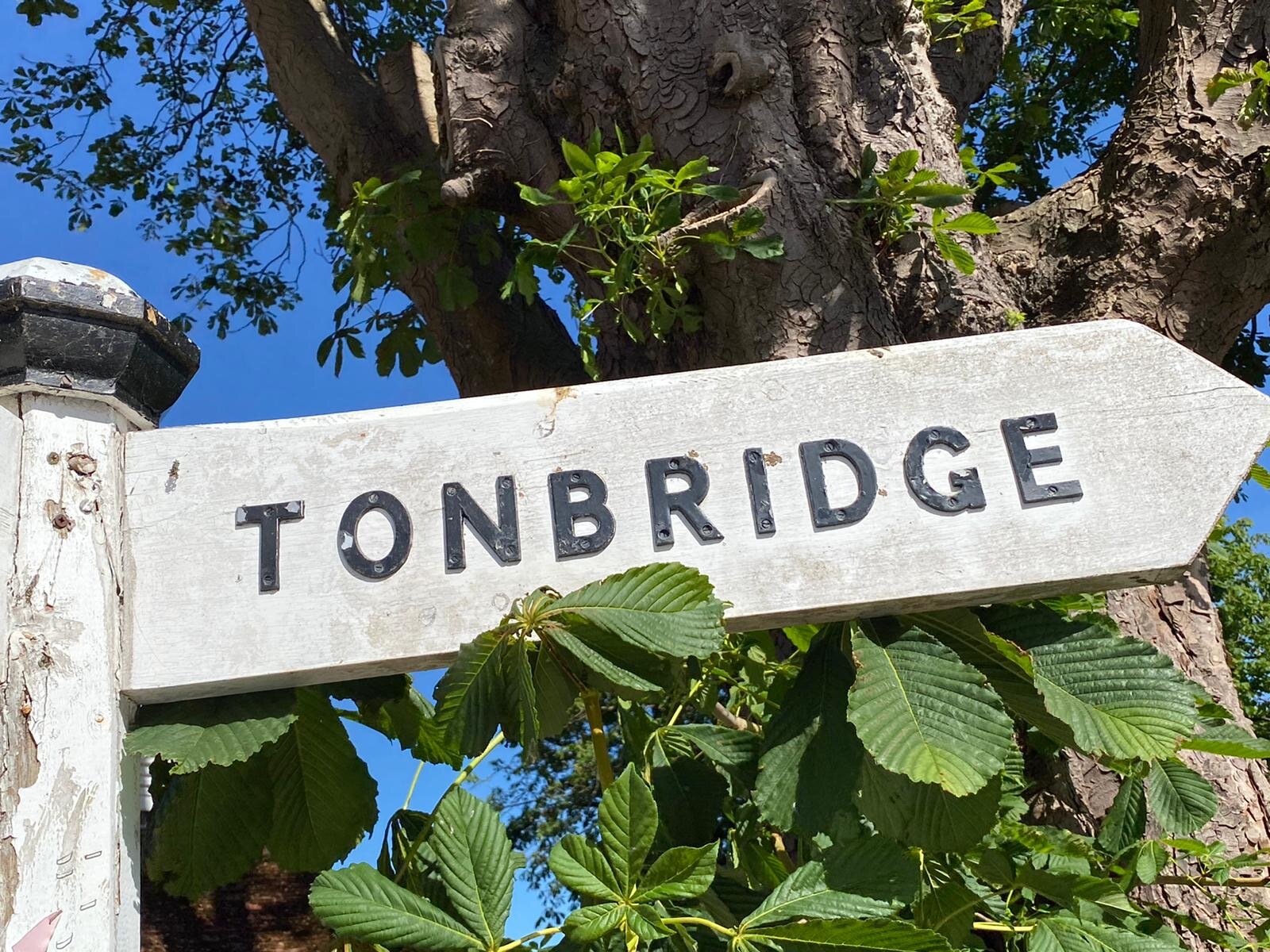

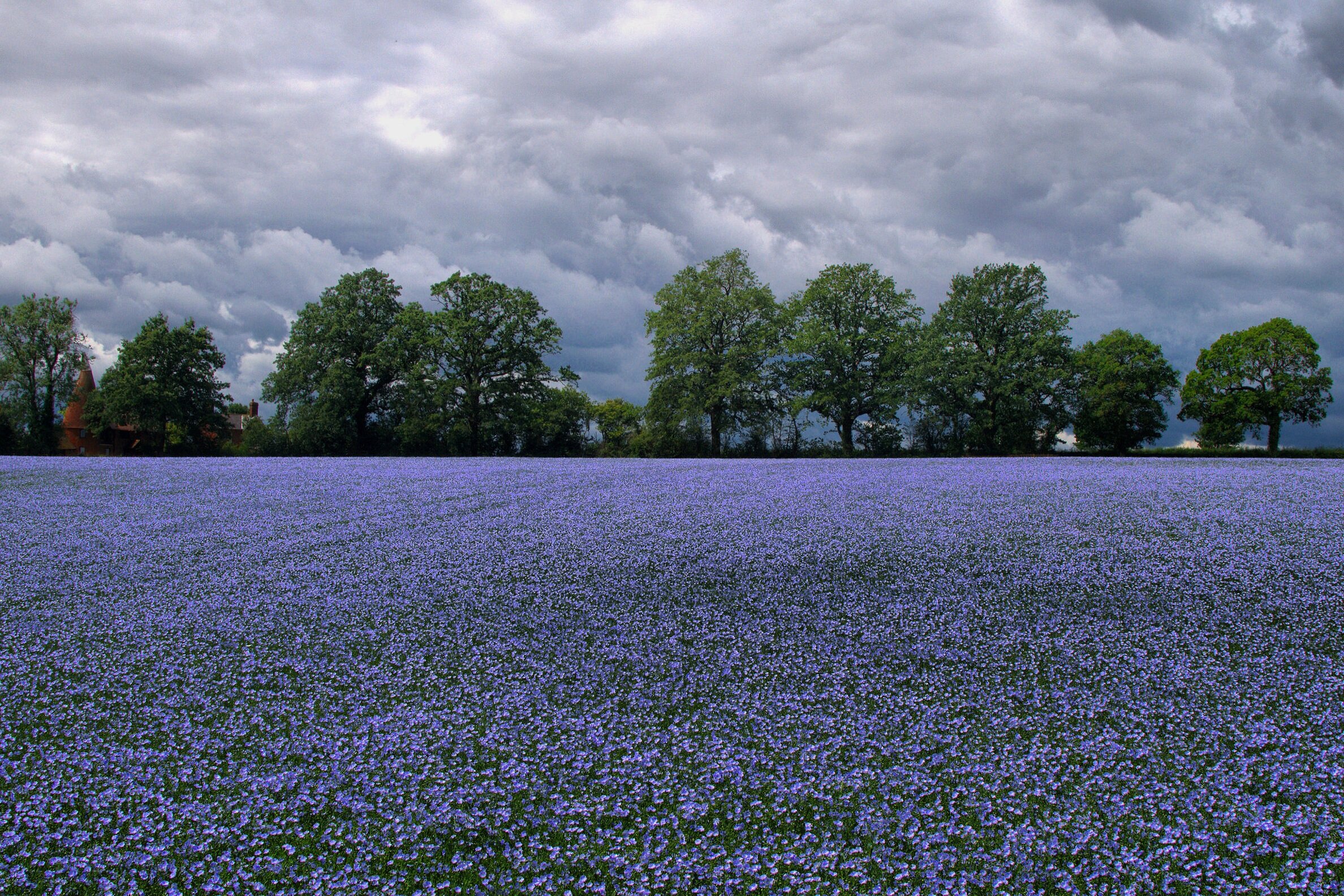

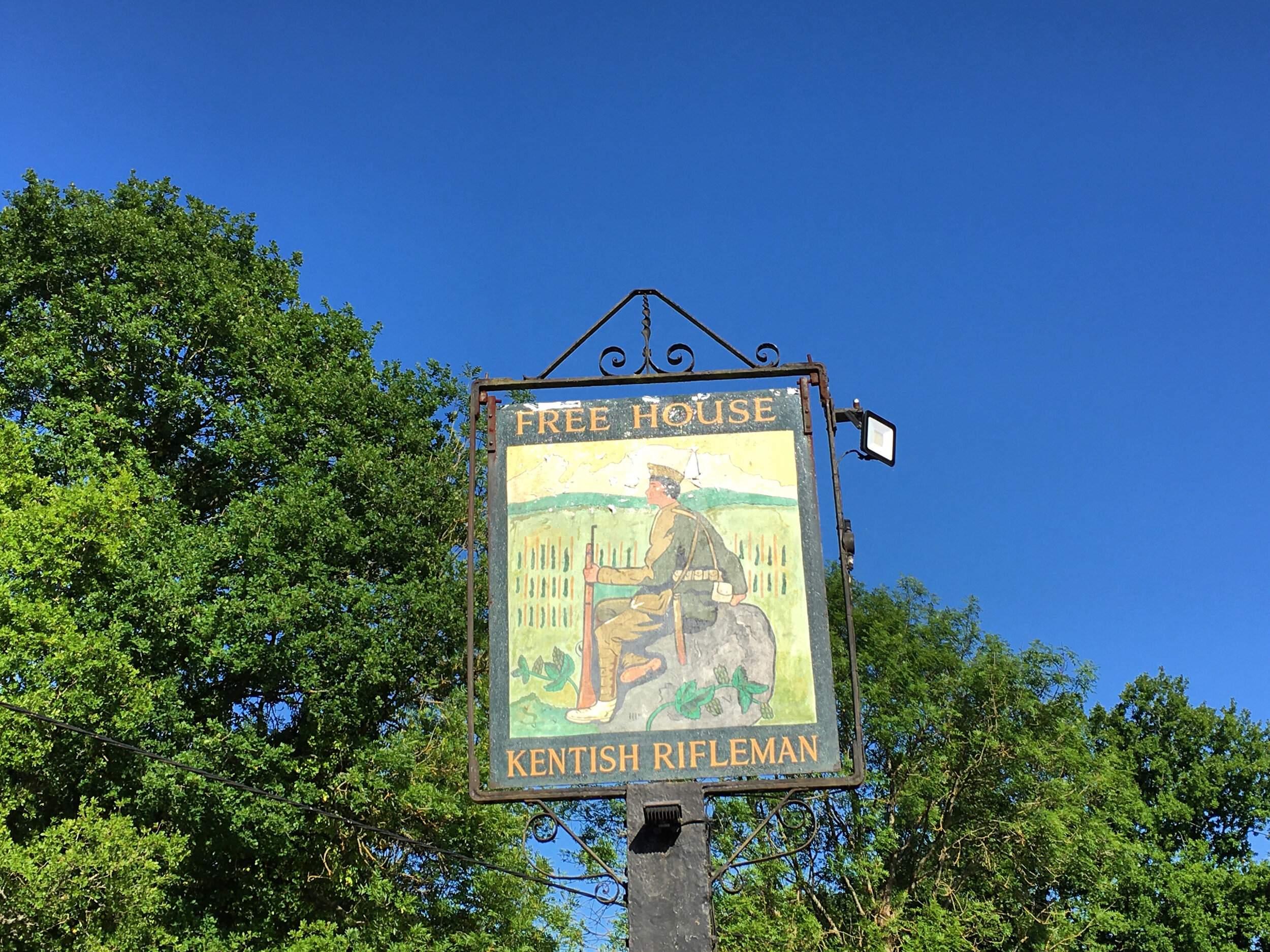
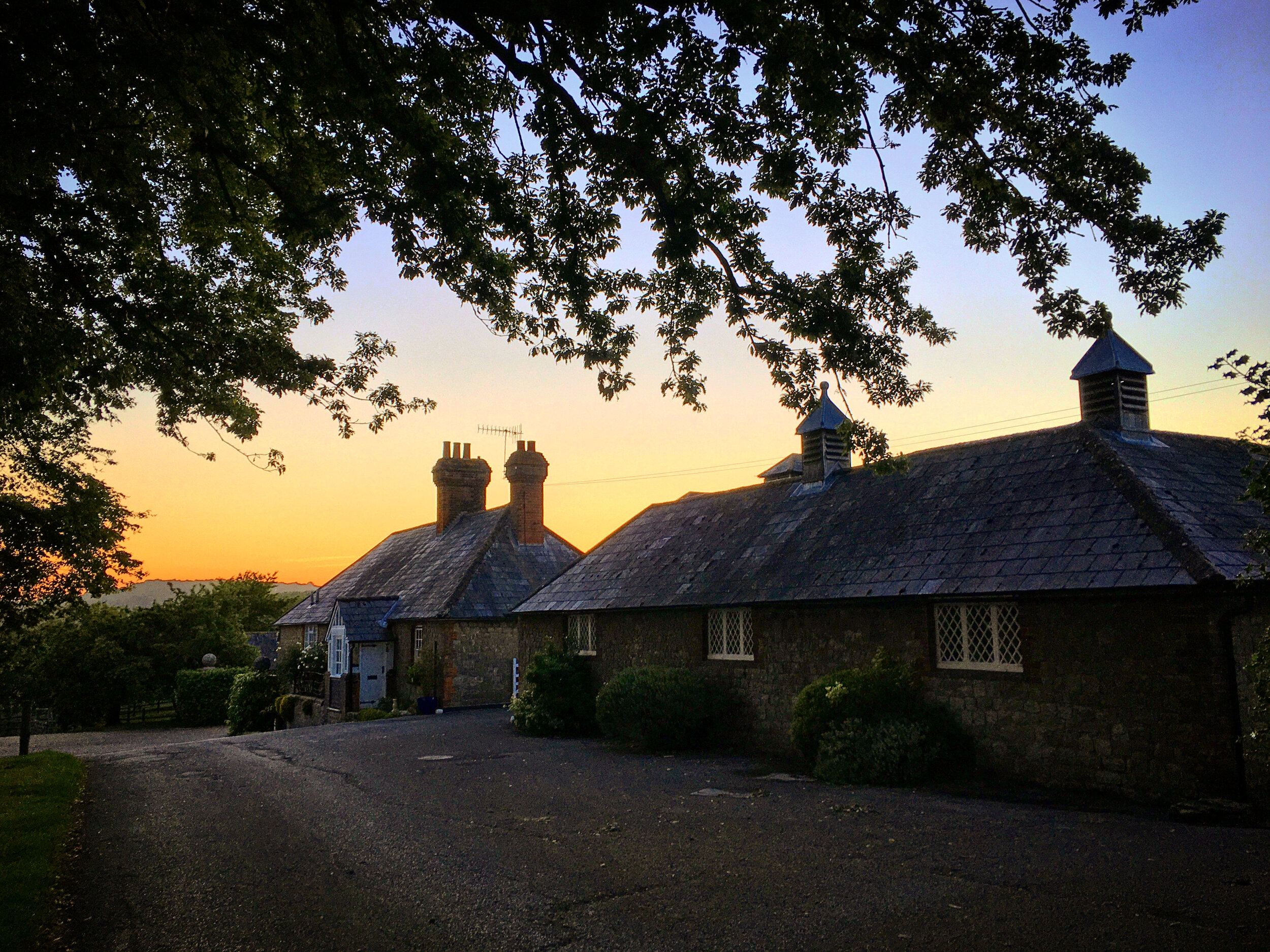
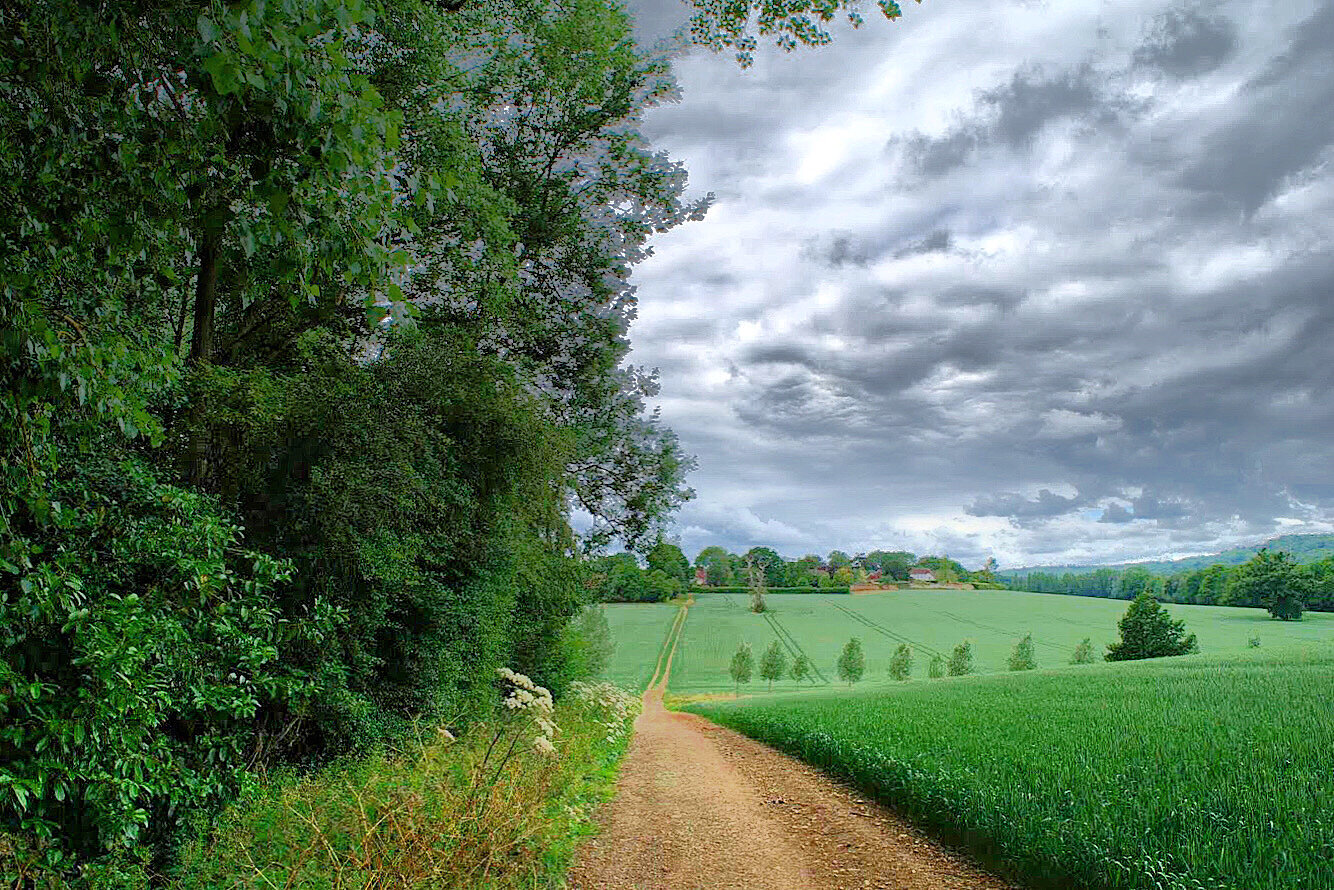
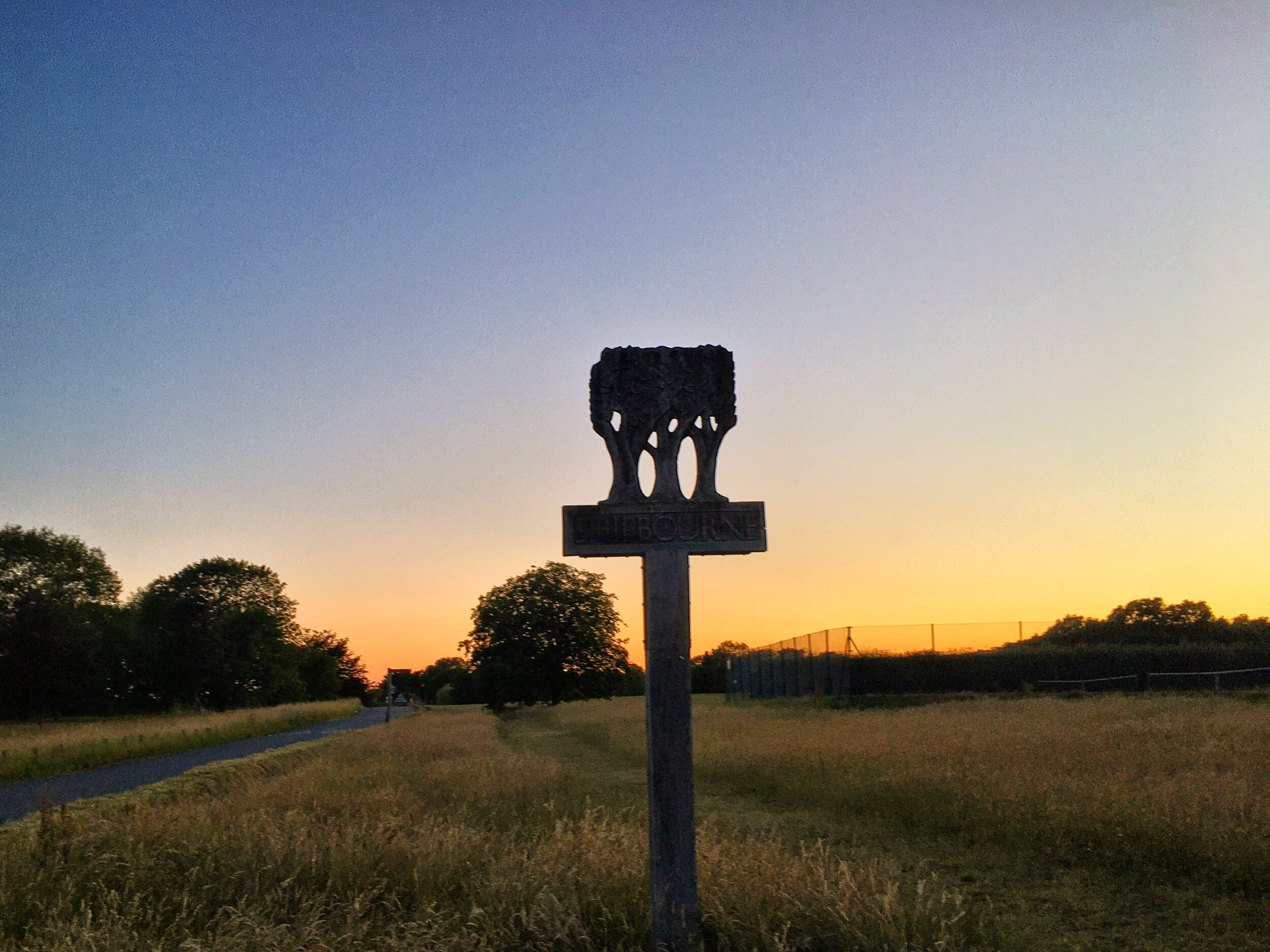
It was Friday 20th March, we were teetering on the edge of lockdown, and in my professional capacity as a Travel Consultant I was at the end of the week from hell.
With the travel advice changing by the hour and borders beginning to close, panic had set in and my inbox was overflowing with scared and confused travellers. Every waking hour since the previous Sunday had been dedicated to repatriating our customers, whilst simultaneously trying to come to terms with what was beginning to look like the end of a lifetime in travel.
Needing an escape from home working, I found myself on that crisp Friday night sat with a friend on a bench outside The Rifleman. The bar inside was standing room only and this normally sleepy country pub was the busiest we had ever seen it. As we contemplated the enormity of what was happening, the sound of song and laughter reverberated from inside, but deep down I think we all knew this was going to be our last pint for quite sometime.
Over three months later and the pubs have just started to reopen. The future of the travel industry is still uncertain, so for the meantime the most exotic destination I’m recommending ‘clients’ travel to this summer is Dunks Green. The views are stunning, the locals are welcoming and the pubs are excellent. If you’re looking for a break from Tonbridge, I would certainly recommend this family friendly destination.
We adore this walk and we hope you will too.
Rifleman bound…
Begin your walk at Shipbourne common and walk towards the tennis courts with Shipbourne church and The Chaser behind you. Take the path on the far side of the courts, following this under the oak trees and then off to the right.
Climb over the stile and then continue along the path, walking down through the field. Cross over the little stream and then climb a second stile, before continuing straight ahead under the low hanging oak trees through the sheep field.
Looking towards the Fairlawne estate
Pass through the gate where you will join the grounds of Fairlawne. This part of the route is a public footpath but runs through a private garden. Please respect the privacy of the owner and stick to the footpath. Please do not be tempted to explore these stunning gardens further. In 2011 local residents fought very hard for the right to continue using the ancient paths that cross Fairlawne, so please enjoy them responsibly.
There has been an estate here since medieval times. The earliest recorded owner is John de Say, who was lord of the manor in the 1200’s. Adam de bavent later took ownership, and it was him that bought a weekly market and an annual fair to Shipbourne each St Giles day. A tradition that continues to date.
Fairlawne Park
The current owner of the estate is Prince Khalid Abdullah Al Saud, a member of the Saudi Arabian Royal family. In addition to substantial business interests, he also owns Juddmonte farms, and a successful race horse stable that has been breeding thoroughbreds since 1977. If you enjoy a flutter, or have had a day at the races, then you may have them to thank for one of your winners. They can set claim to 12 winners in The English Classics, including 3 wins in the Derby. You can read more about their achievements here.
Walk along the path, passing the ornamental bridge and lake, then follow this across the driveway, up the bank and through the wooden gate. After a short, sharp climb, continue across the estate using the yellow posts as a guide.
Following the yellow posts
On your left you see Fairlawne House. The current house dates back to 1640 when Sir Henry Vane (The elder), sold his Hadlow estate and decided to make his home here. When you see the views, you can see why he moved. The house passed down through the Vane family for a number of generations before the family line ground to a halt with William Vane, 2nd viscount Vane, the great, great, grandson of Sir Henry (The elder).
Upon reading up on William, it quickly becomes apparent as to why the family tree ceased to grow. As the last remaining member of the Vane family, hopes of an heir depended on him and his marriage to 20 year old widow, Frances Ann Hawes. William was besotted but Frances, who had been pressured into the marriage, could not have been any less interested. During a trip to Paris with William, she fled to Belgium with Mr Sewallis Shirley where they spent two years living together. The heartbroken William placed adverts in the national news promising a reward for information regarding her whereabouts and paid people to try and find her. When Mr Shirley grew bored, Frances began a new relationship with the 4th Earl of Berkeley, which she only ended after her husband promised her an annual income and a separate household. As if this wasn't demeaning enough, Lady Vane then went onto 'anonymously' publish her thinly veiled memoirs, which described the full extent of her extra marital activities, as well as some uncomfortable truths about her husband!
Fairlawne House
The cost of tracking down his wife and maintaining their marriage hit Viscount Vane hard. Ridiculed by society and saddled with debt, he was eventually forced to sell Fairlawne along with his other estate, Caverswall Castle. As for Lady Vane, she spent her last 20 years bed ridden with illness before dying at her home in London. The Viscount died the following year, finally ending the family lineage of the Vanes. Despite their disastrous marriage, their bodies are buried together in the Vane family vault at Shipbourne church.
Keep going straight, continuing to follow the yellow posts. Just before you climb the stile, look back and to your right for an incredible view of the Weald and the Medway Valley.
On top of the world
When the viscount sold Fairlawne it was snapped up by Edward Cazalet. The new owner was a well travelled and well educated merchant that had made his fortune building ship masts amongst other projects. Looking to retire in England, he bought Fairlawne in 1871 before immediately setting to work on not only modernising the house, but also Shipbourne itself. As well as adding a swimming pool and stables to the house, he also rebuilt St Giles church and then built a new village pub for good measure.
Edward's only son William went on to have four children of his own - three sons and a daughter. His eldest two sons died in the two world wars (both are honoured at Shipbourne church), and his daughter Thelma became one of the first female MP's, leaving his youngest son Peter in charge of Fairlawne.
A secret garden at Fairlawne
An accomplished sportsman, Peter had been awarded a 'blue' in cricket, squash, and tennis at Oxford before turning his hand to jump racing. He went on to race in the Grand National three times before giving up a career in the saddle to develop a stable of steeple-chasing horses at Fairlawne. When the second world war broke out he served his country in the Welsh Guards, along with fellow jockey and close friend Anthony Mildmay. Leaving the army with the rank of Major, he continued his career in hunt racing, taking on the role as trainer for Mildmay who continued to race.
The partnership blossomed and after a series of wins, the pair found themselves dinner guests at Windsor Castle during the racing at Ascot. Sat between Queen Elizabeth and her daughter Princess Elizabeth, Midmay persuaded them to buy a steeple chaser. The horse, Monaveen, was trained by Cazalet before going on to win its debut race, giving the Queen Consort a bug for racing that stayed with her for the rest of her life.
Sheep grazing at Fairlawne Park
Upon the death of her husband, King George, the by now Queen Mother took ownership of the families steeple chasers, and for the next 20 years the horses were trained at Fairlawne. During this period, the Queen Mother would be a regular guest at this grand house, enjoying rides on the estate and getting to know the staff that helped tend to her horses. The annual meet at nearby Lingfield was a highlight of the racing calendar and would coincide with star studded parties in this grand house. The Queen Mum would have mingled with Hollywood royalty including Gregory Peck, Elizabeth Taylor and Richard Burton. In between the racing and games of croquet they would have been entertained by Chan Canasta, the first ever TV magician, and Noel Coward who was dab hand on the piano.
Horse racing, and the buzz it created around Shipbourne, was celebrated by the many staff and villagers connected to Fairlawne stables, nowhere more so than in the local pub. The "New Inn"as it was once known, changed its name to "The Chaser" in 1963 as a way of honouring the local stables and their achievements.
The Chaser, renamed after the success at Fairlawne stable
In 1973 this legendary era at Fairlawne was cut tragically short when Peter fell ill with cancer. Too fragile to attend Aintree in person he watched his final winner on television, with the Queen Mother by his side. His death just a few weeks later bought an end to not only the stables at Fairlawne, but also their special royal connection. If you have found this part of the walk interesting I would urge you to read these memories of Peters son, Sir Edward Cazalet, they contain some brilliant and heartwarming anecdotes of Fairlawne. You can read them here.
Keep going uphill, past the brick gates and then continue on until you reach a stone wall, where upon climbing the stile you will come out onto Plaxtol Lane.
Turn right and walk down the road with care as you enter the pretty village of Plaxtol. The pavement comes and goes throughout this part of the walk, so keep your eyes and ears open for passing vehicles.
Surrounded by quaint weather boarded cottages and a cluster of listed buildings, you will find Plaxtol church. At first glance it looks all too familiar, but look past the colourful gardens and you may notice that this place of worship is rather plain compared to some of the other churches you have seen on the walks so far. The reason behind this austere design takes root in its year of its construction - 1649.
Church cottages, Plaxtol
At the time, England was under the rule of Oliver Cromwell. Prior to this, Plaxtol only had a chapel of ease, meaning its parishioners faced an 8 mile round trip to Wrotham each time they were to attend worship. That's a long way to travel on muddy footpaths in your Sunday best! With this in mind, Sir Henry Vane (The younger son of Sir Henry the elder), a prominent politician, raised the issue in parliament and the new church was given the go ahead.
Cromwell was a Puritan, so the construction of churches during the commonwealth period was exceptionally rare. Those that were built were purposely designed to be as simple as possible - as a result all of the windows were glazed with plain glass, the church did not have a dedicated saint, and until Victorian times it did not even have a transept or a chancel. Despite his efforts in obtaining a new church for Plaxtol, and later paying for the addition of its tower, Sir Harry was actually interred with other members of the Vane family at Shipbourne church, following his execution at Tower Hill. Despite a chequered political career his good deeds for Plaxtol have not been forgotten.
Plaxtol church
The current transept (the wings of the church which form a cross shape) and chancel (the area behind the altar), were added when the Cazalet family restored the building in 1894. The chancel was built as a memorial to Lieutenant Max D D Dalison, who was killed in action in the Anglo-Sudan war. The Dalison family lived locally and had also submitted their own design, but it was the Cazalet option which was chosen, providing the church with its only stained glass. A copy of the plans for the Dalison design can be found hanging in a frame inside.
Follow the road round to the right and when you reach the junction with the The Street, you have the option of turning left and making a short detour to The Papermakers, a modern village pub serving up great food with a warm welcome.
Otherwise continue past the Memorial Hall, once the village school and headmasters cottage. Walk past the new Plaxtol school, then on your right you will see a little park and playground should any younger walkers wish to stop for a play. Think of this as a trade off for the pub stop!
Betenson Cottages, the Plaxtol Almshouses
Across the road from the playground you will see Betenson cottages, named after Miss Helen Betenson, the last surviving member of the Betenson family who lived in nearby Wrotham. Upon her death in 1788 she donated part of her fortune to be used to pay for 12 almshouses in the then borough of Wrotham. Plaxtol, Wrotham and Platt were to receive four houses each, with Betenson cottages making up Plaxtols share. The houses were built to provide accommodation for "twelve aged or infirm persons, being poor, sober, orderly and industrious parishioners; inhabitants of the ancient Parish of Wrotham and members of the Church of England".
When these houses were built in 1853 they would have been a luxurious upgrade for their tenants. Each cottage had its own kitchen with a running cold water tap and an open fire range. The occupants also received a small weekly income, and a little bit extra to cover repairs. Considering that this was over 50 years before the welfare state began, a tenancy here would have been highly sought after. The cottages have been modernised today but remain under the ownership of The Betenson Trust.
Looking out towards Roughway Farm
After 230 metres, cross the road and climb over the stile. Follow the path downhill, drinking in the view as you go. The hilly landscape is dotted with oast houses and patchwork fields in a testament to what would have once been hop growing territory. Plaxtol claims to be the home of the Golding Hop, a celebrated hop variety that was first commercially developed by a 'Mr Golding'. This continues to be debated amongst beer enthusiasts to date. You can read both sides of the argument here. The last of the Plaxtol hops were grown at Roughway Farm in the 1980's. The farm is now revered for another Kentish crops - the cobnut. You can check out their produce here.
Follow the path over the stile and walk through the little strip of woodland before ascending another stile into a larger field of linseed, also known as flax. By mid-summer this will be a sea of blue flowers, awash with butterflies and bees floating above the surface, feasting on the pollen.
Linseed/Flax in full bloom
Flax doesn't just make a pretty picture, its fibres have been used by humans to make textiles for over 30,000 years - the earliest evidence was found in a stone age cave in Georgia. The ancient Egyptians first used it to make linen around 5000 years ago and it has been used in Britain since the bronze age. Flax hasn't been weaved in the UK since the 1950’s but the crop remains in demand, predominantly for its seeds which can be eaten for their health benefits and also used to produce oil.
Follow the track along the hedge and then when it curves to the left, take the stony path off to the right and continue downhill through the field. The view is spectacular here and when the wind blows it feels as if you are soaring above the valley below. The breeze is cooling on hot summer days but in winter it will cut right through you.
A cairn along the stony path
Continue all the way down the path, ignoring the first stile on your left. Keep going along the hedge and then climb the second stile which takes you over a large rock. It's a little awkward to climb, so do take care.
Follow along the hedge for 30 metres and then pass through the kissing gate. Turn left and walk down the road with care as you pass by The Roses, a large house dating back to Elizabethan times. The original property was built in 1550 for a merchant by the name of John Dunk. Not much is known about Mr Dunk but he certainly made an impact as the hamlet went on to be known as 'Dunks Green', and the name has stuck to this day.
The Roses, Dunks Green
Walk round the bend and you will come to The Kentish Rifleman. Back in John Dunk's day, this old pub was known as The Red Lion - after all those zoom quizzes you probably know this is the most common pub name in the UK! The pub changed its name to the Kentish Rifleman in 1867, in what is thought to have been an attempt to garner new recruits for the local volunteer force.
In Victorian times enlistment to the army often took place in pubs as wily recruitment sergeants looked to meet their quotas by using and abusing the persuasive powers of alcohol. Upon verbally agreeing to sign up, the new recruits would agree to 'take the King's shilling'. This was a symbolic coin which would act as 'gentleman's agreement' until the candidate was sober enough to swear their allegiance in front of a magistrate. Less scrupulous sergeants would sometimes ply their candidates with so much drink that they could not recall whether the shilling they found in their pocket the next morning had been accepted willingly or if it had been planted there, by which point it was too late, and a minimum of 21 years in the military awaited.
The Kentish Rifleman during lockdown 2020
Unlike the regular soldiers, the Riflemen were a volunteer army formed in 1859. Earlier that year, Britain had found itself caught in the middle of a war between France and the Austrian Empire after it emerged that the bombs used for an assassination attempt on the French monarch had been manufactured in England. With the regular army spread thinly round the Empire, and a possible French invasion brewing, Britain desperately needed as many recruits as possible. To meet this demand each county in Britain was given permission to form a subdivision of volunteer rifle corps, hence the 'Kentish Rifleman'. One of the first corps formed in Kent was in Tonbridge. It was a subdivision of the Maidstone battalion, established in December 1859. You can read more about this and the other corps here.
Nowadays the Rifleman is a beautiful country pub, offering good food, an attractive beer garden and well kept beers. No matter how many of these you drink, I can assure you that there is no danger of being conscripted!
Into the woods….
When leaving the Rifleman, turn right down Roughway Lane and then take the path off to your right. Continue until you reach the kissing gate and then walk across the meadow. You will see the Rifleman across the field to your right.
Go through the hedge and a second kissing gate, and then cross the road, walking back through the gate you came through earlier. Walk along the hedge, climb back over the awkward stile, then continue diagonally across the field towards the trees.
Fairlawne Home Farm
Climb another stile and then continue into Shipbourne woods. Come spring this shady enclave will be covered in native bluebells. These enchanting blooms have captured the imagination for hundreds of years and are shrouded in myths and legends. Folklore dictates that if a bluebell rings then the fairies will gather, although if a human hears this little bell they will be visited by an evil fairy and die! A piece of advice for younger walkers too - should a child pick a bluebell, legend has it that they will disappear forever. So with these lessons in mind, stick to the path and never pick any wildflowers! Upon leaving the trees follow the track across the field. To your left you can see the tops of the trees at Dene Park, the huge forest that sits between Shipbourne and Tonbridge.
Continue over the stile and then cross the road with care before following the path through Fairlawne Home Farm. Don't be fooled by the pretty cottages and converted stable blocks, this is still very much a working farm.
Fairlawne Home Farm
Walk down the track and then continue downhill. On hot summer days these dry rolling fields and rows of trees conjure up images of Tuscany. In the distance you will be able to see the Greensand Ridge, the wooded hills that sit above Shipbourne forming part of the Kent Downs Area of Outstanding Natural Beauty. There are 46 AONB in the UK, with their primary purpose being to conserve and enhance the beauty of the landscape.
Climb the track uphill, passing the dead tree and then leave via the kissing gate at the corner of the field. Walk past the house and then turn right onto the road, where you will join the far reaches of Shipbourne Common. The carved oak sign symbolises the hornbeam trees that mark the ancient boundary of the village.
Shipbourne Common
Retrace your steps back past the tennis courts, marking the end of your walk. If you wish to enjoy Shipbourne a bit longer then why not stop for a drink at The Chaser or stay for a picnic on the common.
Acknowledgements
Thank you to Vicky at the Rifleman, whose takeaway beers and cake during lockdown gave us something to smile about.
Thank you also to the Plaxtol and Shipbourne historical societies. Their extensive archives contain a wealth of information that have helped with my research for this walk.
